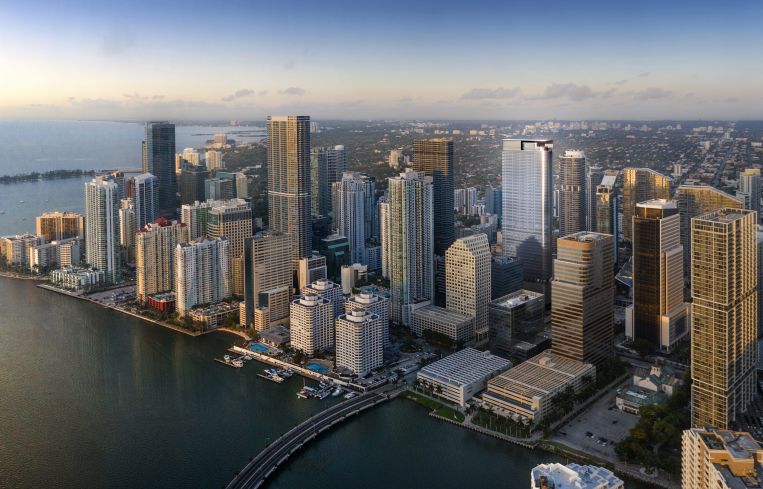Finance Tenants Make Up 22% of Post-COVID Miami Leasing
By Chava Gourarie October 20, 2021 1:30 pm
reprints
Wall Street’s migration to sunny South Florida is finally showing up in the numbers.
Vacancy is still high, and leasing still below pre-pandemic levels, but newcomers are making up some of the difference.
Finance tenants made up 21.6 percent of office demand in the Miami area since COVID began, up from 16.4 percent prior to the pandemic, according to data from Avison Young. In West Palm Beach, financial tenants made up 25.9 percent of all post-COVID leasing, followed by biotech and life sciences tenants, which took 18.8 percent in total. (The data compares leasing before and after April 2020.)
In addition, finance was the only sector to see employment increase in the Miami metro area rather than decrease, compared with pre-pandemic levels, per Avison Young.
But even the New York hedge funds are not enough to fill all of South Florida’s empty office space.
Vacancy in all three South Florida counties—Miami-Dade, Palm Beach, and Broward—followed a similar trajectory: Still at uncomfortably high levels as of third quarter 2021, and up from this time last year, but down from the second quarter, according to reports from Cushman & Wakefield.
In all three markets, the high vacancy rate was in part due to deliveries. The Miami-area market had 1.4 million square feet of office space delivered since the beginning of 2020, with another 2 million square feet scheduled to be completed this year and next, according to Avison Young.
That’s led to negative absorption rates. In Miami-Dade, leasing activity totaled 2 million square feet in the first three quarters of 2021, a robust rebound from 2020, but net absorption over that period was negative 382,691 square feet.
In Palm Beach, however, leasing activity totaled 1.5 million square feet, which would surpass 2019 levels if it kept up at this rate, and net absorption was also positive.
The West Palm Beach market in particular has been the center of investment activity, with $1.2 billion in office transactions year-to-date, compared with Miami’s $1.8 billion.
All three markets also saw rents increase, along with instances of tenant sweeteners. In the Miami market, office rents stood at $43.47 a foot, up 11.3 percent since 2019, while the free rent period was up 9.2 percent to an average of 9.8 months.
Another factor impacting South Florida office markets is that many new-to-market tenants are opting for shorter leases, or for temporary homes in coworking spaces. In Fort Lauderdale, average lease terms are just under five years, according to Avison Young.
Chava Gourarie can be reached at cgouarie@commercialobserver.com.



